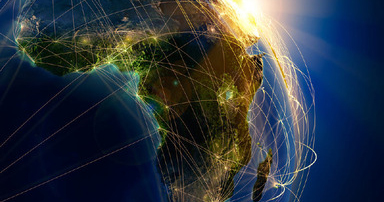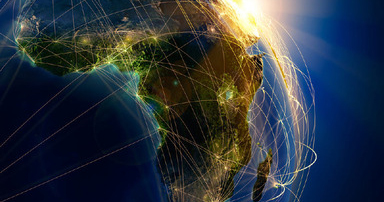This blog is part of a series published on WEFLIVE from young leaders in the One Young World community who are addressing issues across the world relating to the World Economic Forum 2017 theme of 'Responsive and Responsible Leadership'.
[[[image 1- large]]]
According to the International Energy Agency, only 290 million out of the 915 million Sub-Saharan Africans have access to electricity. Furthermore, 80% of that total population is still reliant on solid biomass for cooking.
Which begs the question, just how are we going to meet the United Nations Sustainable Development Goal #7 of ensuring access to affordable, reliable, sustainable and modern energy for all?
A major challenge to energy provision has been the high cost associated with power generation, grid extension initiatives, and the risky nature of off-grid small systems, which have proved unattractive to large scale potential investment.
African governments have pursued policies discouraging isolated mini-grids in areas where the geography has impeded normal grid extension. But in recent years the sector has seen a shift in policy in favour of mini-grids and private sector empowerment, which has increased the attractiveness of investing in the region.
Some of the most promising business models revolve around innovative financing to achieve last mile energy distribution while ensuring sustainability. The current investment focus is directed at funding mini-grids powered by Solar PV (Photovoltaic), Hydro, Cogeneration and Biomass energy. It is argued that such developments reduce energy losses and the total cost of grid extension. According to the Kenya Renewable Energy Association (KEREA), the connection fee barrier to users has been addressed by a combination of government and donor funded grid electrification.
Partnership initiatives are increasing energy generation and extension capacities across the African continent. In Kenya, the Rupingazi Hydro-Power project was launched in 2016 to generate an estimated 28m kWh per year. Another such project is to be implemented in Turkana region by Barclays Kenya bank in partnership with the UK government’s Department for International Development (DFID) through Energizing Development (EnDev) and GIZ Prosolar.
The programme will see the development of several Solar PV hybrid mini-grids (SHMGs) in Kenya. Another interesting partnership, between INENSUS from Germany, TerraProjects from Australia, St. Augustine University of Tanzania and RP Global from Australia, has resulted in a mini-grid by JUMEME in Ukara Island in Tanzania. It will serve an estimated 100,000 people in the coming two years.
Such models of financing have also been seen in Rwanda. The Rwanda government, through the RWA9083 project in partnership with EEP and Neseltec Ltd, is developing approximately 35 Solar PV mini-grids of 30kW each, to electrify more than 20,000 rural families at an estimated cost of $9.8m USD.
Mini-grids are being developed from biomass. Cummins Cogeneration Kenya Ltd has developed a 10 MW power plant in Marigat using a technology called the Biomass Integrated Gasification Combine Cycle, which claims a reduced environmental footprint. The company is looking into requests from Copperbelt Energy Corporation in Zambia, the Uganda Electricity Company, and other African partners for consultation.
South Africa has developed a 4.4 MW direct electricity supply to a private company (BMW), using a technology called Anaerobic Digestion. Such technologies rely on locally available biomass and can be replicated in most African countries to reduce the shortfall in access to energy. The company, Bio2Watt, has received requests from other African countries, such as Kenya, to do pilots of the technology.
Another off-grid innovation is the portable plug-and-play product Pay As You Go (PAYG). This utilises mobile financing to give low-income consumers access to energy. Many companies in Africa are using this model. Provider Azuri has added an adaptive technology to dim lights on cloudy days so as to save power. The PAYG model is used to sell accessories such as televisions and cooking stoves. MicroEnergy Credits is trying a loan system through partnership with Equity Bank in East Africa to provide solar kits and selected cook stoves to people.
Several startups in the technological and finance sectors are addressing issues around poverty and energy access. M-Changa, a crowdfunding online platform, has partnered with Energy for Impact, the Climate Innovation Centre and DFID to help energy entrepreneurs raise funds, with a promise of 50%-100% support from DFID. There has recently been increased backing for energy startups in Kenya, Uganda and Tanzania. In Kenya, organisations such as Strathmore Energy Research Centre, the Kenya Climate Innovation Center, and Growth Africa have backed the growth of energy businesses specialising in solar and biomass energy and mini-grid development.
If this approach is rolled out across the continent, it will lead to increased energy capacity and will germinate businesses dedicated to solving energy provision challenges.
The idea of affordable, reliable, sustainable and modern energy for all in Africa might become more than just a dream.
Kevin Musila Nateminya is a One Young World Ambassador. He together with Marielle Fillit co-founded Kenya Green Supply Ltd, a Solar Home Entertainment System Company for off-grid markets in East Africa. The company is developing a product which will bring Digital TV and App Internet into households, all powered by Solar.

